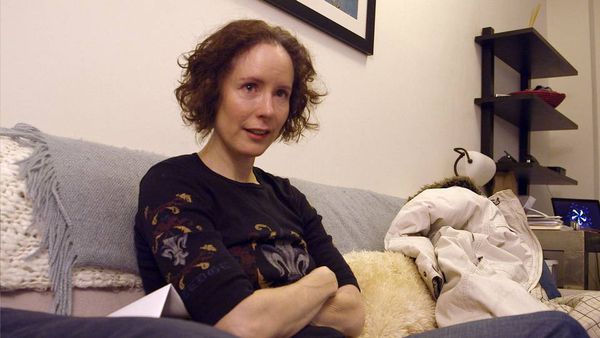Eye For Film >> Movies >> Borderline (1930) Film Review
Borderline
Reviewed by: Jennie Kermode

It is widely accepted that some of the most insightful films on US race relations have been made elsewhere in the world. Borderline is an early example. Made by a British crew and shot in Switzerland (which stands in remarkably well for a Southern American town), it's significant in part because it came out in 1930, the same year that the Hays Code was imposed on US filmmakers, explicitly forbidding any representation of romantic or sexual activity between people of different races. With a plot that revolves around an affair between a black woman and a married white man, it tackles the social issues surrounding this head on, and it's also a strikingly erotic film for its time.
Macpherson is a director who knows how to draw out the erotic without resorting to anything as crude as naked flesh. Nervous glances, smouldering stares, a casual rearrangement of the legs, a hand that lingers for a moment too long - these familiar elements of the silver screen's romantic language are made gloriously suggestive. Because the film is silent and everything needs to be expressed through movement and gesture, there's the larger than life quality that these forms of communication develop in theatre, but Macpherson understands his medium well and knows when a more nuanced approach will convey a stronger passion.

The film benefits from a host of good performances, especially from Paul Robeson as Pete, the man whose partner (it's unclear whether or not they're married) is having the affair. As a black man, he will personally pay a price for it that goes beyond the pain of betrayal, as racial hatred swells among the scandalised townsfolk and as he finds himself that rival of a white man unaccustomed to seeing black people hold any kind of power at all. We're still in the Jim Crow era here, and although Pete and his beloved Adah (Eslanda Robeson) are theoretically allowed to live freely, they are far from being considered equal to their white neighbours. Without words, Paul Robeson conveys a lifetime of suffering and resentment, shows us the joy he experienced when falling for Adah and then the struggle between jealousy and the desire to forgive. Eslanda Robeson doesn't get as much freedom of expression, constrained behind heavy make-up and mostly required to offer longing gazes, but importantly she isn't educed to her sensual qualities - a big problem for black women in US-made films of the era - instead being shot in much the same way as any white heroine of the time, the erotic elements duly giving way to tenderness and angst.
The film offers a much meatier role to Helga Doorn as Astrid, the wife of the white man. Apparently unable to comprehend the enormity of being rejected for a black woman, she gradually loses her grip, but whilst we are invited to pity her we also see the full ugliness of racist attitudes emerging from her as she blames her situation on the very presence of black people in the same country. There's a rawness about Doorn's performance that is unusual for a woman in the era, and the film is much more powerful as a result. Through this role, the viewer is asked not merely to observe racism but to query its origin in the human psyche - something well ahead of its time in mainstream cinema.
Finally there's Gavin Arthur as the white man, potentially the most unsympathetic character because of his failure to assume the responsibility associated with his social advantages. Arthur plays him as a tormented soul, a familiar archetype of the time, but at least succeeds in convincing he viewer that what he feels for Adah goes further than lust, and that he is not seeking to exploit her. It's unfortunate that he goes all out with his agonised looks from the outset because this leaves him no room to develop as his circumstances deteriorate - but the doomed lovers were always ging to be the least interesting element of this tale.
With a new soundtrack by jazz legend Courtney Pine, this potent little film is well worth seeking out. Its human drama transcends time and its socio-political observations are as relevant as ever.
Reviewed on: 27 Oct 2016














